Candidate Chemical List
CA SCP - Candidate Chemicals
California Department of Toxic Substance Control (CA DTSC)
Assessment of regulatory needs
EU - PACT-RMOA Substances
European Union / European Commission (EU EC)
Some Solvents
GSPI - Six Classes Precautionary List
Green Science Policy Institute (GSPI)
Chemicals of High Concern
MDH - Chemicals of High Concern and Priority Chemicals
Minnesota Department of Public Health
CoHC List (non SVHC)
CPA - Chemical Footprint
Clean Production Action (CPA)
Children's Products
C2C Certified v4.0 Product Standard Restricted Substances List (RSL) - Effective July 1, 2022
Cradle to Cradle Products Innovation Institute (C2CPII)
Formulated Consumer Products
C2C Certified v4.0 Product Standard Restricted Substances List (RSL) - Effective July 1, 2022
Cradle to Cradle Products Innovation Institute (C2CPII)
Priority for Inclusion in the Living Building Challenge Red List
Living Building Challenge 4.0 - Red List of Materials & Chemicals - Effective February 1, 2025
International Living Future Institute (ILFI)
Food Contact Chemicals Database Version 5.0
Food Contact Chemicals Database (FCCdb)
Food Packaging Forum
Food Contact Chemicals of Concern List (FCCoCL) - TIER 3
Food Contact Chemicals of Concern (FCCoCL)
Food Packaging Forum
Substances of Very High Concern (RIVM ZZS)
Substances of Very High Concern (RIVM ZZS)
The National Institute for Public Health and the Environment (RIVM)
FPF Priority Substance List from FCCdb
FPF Priority Substance List from FCCdb
Food Packaging Forum
Food Packaging Forum Priority Substances List
GreenScreen Certified Standard for Food Service Ware RSL
Clean Production Action (CPA)
TSCA Commercially Active
TSCA Chemical Substance Inventory (Active-Inactive)
US Environmental Protection Agency (US EPA)
GreenScreen LT-1 (based on 2018 Chemical Footprint Project)
GreenScreen Certified Standard for Medical Supplies & Devices Silver-Gold RSL
Clean Production Action (CPA)
Restricted Substances in Products
Apple Regulated Substances Specification
Apple Inc.
New Zealand Inventory of Chemicals (NZIoC)
New Zealand Inventory of Chemicals
Te Mana Rauhī Taiao (Aotearoa New Zealand EPA)
The Australian Inventory of Industrial Chemicals
The Australian Inventory of Industrial Chemicals
Australian Government
Existing Chemicals List
Korea Existing Chemicals List
Korea Ministry of Environment
IECSC-2013
The Inventory of Existing Chemical Substance in China - 2013
China's Ministry of Ecology and Environment
Philippine Inventory of Chemicals
Philippine Inventory of Chemicals
The Philippine Government
DSL-all
EC - CEPA DSL
Environment Canada & Health Canada (EC)
Taiwan Existing Chemical Substance Inventory
Taiwan Existing Chemical Substance Inventory
Taiwan Ministry of Environment
TSCA - Substantial Risk Notices
TSCA Chemical Substantial Risk Notices
US Environmental Protection Agency (US EPA)
NICNAS
Australia - National Industrial Chemicals Notification and Assessments (NICNAS)
Australian Government
All Products
C2C Certified v4.1 Product Standard Restricted Substances - Effective July 1, 2025
Cradle to Cradle Products Innovation Institute (C2CPII)
Trade Union Priority List 2.0
ETUC - Trade Union Priority List 2.0
European Trade Union Confederation (ETUC)
CSCP - Reportable Ingredient List
California Safe Cosmetics Program - Reportable Ingredient List
California Department of Public Health (CDPH)
Regulatory risk management
EU - PACT-RMOA Substances
European Union / European Commission (EU EC)
 Likely to cause
Likely to cause
 Can cause
Can cause
 May cause
May cause









